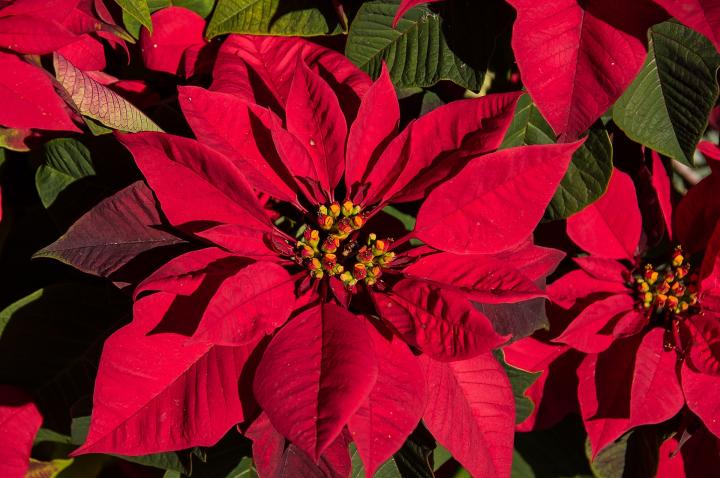
7 Tips for Poinsettia Plant Care, through the Holiday Season and Beyond
ADVERTISEMENT
Poinsettias are such a disappointment to me. I buy one every year, hoping that I can NOT kill it this time and within 2 weeks, it has (again) dropped ALL and I mean ALL of its leaves after they wilted and finally turned brown. When I bought it, it was very soggy, so when I got home, I removed the foil, and placed it in a saucer to drain and dry out a little. I used my moisture meter to gauge when to give it a drink, and by the time it was NOT soggy, it was already starting to drop its (yellowing) leaves. I watered it ONCE when it indicated towards the dry/moist line, but NOT dry and let it drain over the sink. Now a week later, it has NO leaves on it at all, although the stems are still green. I guess this is one Euphorb I am just not meant to keep. We just got a kitten, though so probably for the best....
My wife has 2 poinsettias that she has had for 2 and 3 years. She cuts it back to about 6" when "Christmas" extended is over and plants it outside when it is warm enough in northern Kentucky. They grow from that 6" up to about 24-30" and about 2-3' in diameter during the summer and early fall. When frost threatens, she brings them in, puts them in our enclosed sunporch and lets the red happen even further. One is going out this year, as the pot, which has to be increased as the plant gets older, is getting too big. But we got 4 in one pot this year, 2 red and 2 white, so I think she will keep one of each and we'll have red and white this coming Christmas.
I also love in nky and was able to keep my christmas poinsettia alive this year! Where outside do you have it? I repotted it but it looks insure.
I have 4 in a pot I had them outside on my covered patio all summer.when it started getting in the 40s here in Raleigh NC I brought it in.put it in dark room at night an light daytime.it is not blooming at all.what am I doing wrong
I looked into this a few years ago, to trace the origin of the myth. Apparently the myth stems entirely from one case of a child dying of unknown causes in 1911, who had been known to eat poinsettia leaves. There was no other reason, evidential or even documented, to label the plant poisonous for the next 100 years, and I find, when confronted by one of the thousands of Americans still sharing this belief, the best response is to simply pluck a leaf and eat it in front of them.
Oh, that's a hoot.
I have several poinsettia plants that I have had over the last 3 years or so. They are all in different pots. Can you put more than 1 plant in a bigger pot together ? Or is it better to leave alone in a pot?
Hi, I have a poinsettia from Christmas 17' I am not interested in forcing it to bloom. I just want to keep it happy. It was the only living thing in the hospital room with a dear friend when he passed and the priest who gave him his last rites brought it from the church on Christmas Eve. So it is my mission to keep it alive and happy. I almost killed it when I moved it to a different location and forgot water it. Right now it looks like more of tree. Should I be pruning it? I can send pictures if you have an email address or FB page. Thank you.
Whatever you’ve been doing, keep it up, Eileen! Your success is remarkable. The “A” months are the time to prune poinsettia–April and August (yes, both, according to experts at a nursery in Hawaii, where these plants grow like bushes). In April, they say, remove all foliage and cut back to 4 to 6 feet in height. You could also repot it at this time. Begin to fertilize it in early May, when it sprouts new growth. Pinch back new growth in late May/early June so you encourage branching. In August, trim all shoots to 3 to 4 leaves to prepare the plant to bloom.
Did your aunt cover her outside plant to keep it blooming each year? How did she care for it?
Thank you










